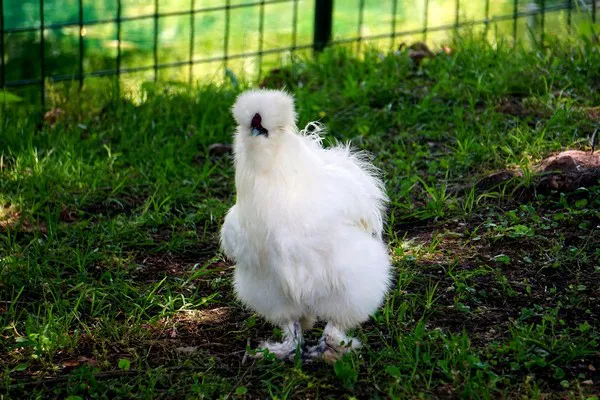In the vast tapestry of the animal kingdom, size often captivates our imagination. From the towering elephants to the majestic blue whales, the diversity in size among mammals is truly remarkable. However, hidden amidst the giants lies a world of miniature wonders, where creatures defy expectations with their diminutive stature. In this article, we embark on a journey to explore the smallest mammal species, delving into their unique characteristics, habitats, and the fascinating adaptations that allow them to thrive in their environments.
The smallest mammals also face distinct ecological pressures, including predation risk and competition for resources. Consequently, they have evolved an array of specialized adaptations to navigate their challenging habitats successfully.
Exploring the Smallest Mammals:
1. Etruscan Shrew (Suncus etruscus):
The Etruscan shrew holds the title of the world’s smallest mammal by mass, weighing a mere 1.2 to 2.7 grams. Native to Europe, Asia, and Africa, these tiny creatures inhabit a variety of habitats, including forests, grasslands, and agricultural areas.
Despite their diminutive size, Etruscan shrews are voracious predators, feeding on insects, spiders, and even small vertebrates. Their high metabolic rate requires them to consume nearly their entire body weight in food daily, making them one of the most energetically demanding mammals.
Etruscan shrews possess several remarkable adaptations to support their predatory lifestyle. Their elongated snouts house a dense concentration of sensory organs, allowing them to detect prey with incredible precision. Furthermore, they have exceptionally fast reflexes, enabling them to capture elusive prey with lightning speed.
2. Bumblebee Bat (Craseonycteris thonglongyai):
Found in the limestone caves of Thailand and Myanmar, the bumblebee bat holds the title of the world’s smallest mammal by skull size. With a wingspan of only 5.5 to 6.7 inches and a weight of 1.5 to 2 grams, these diminutive bats are a testament to nature’s ability to miniaturize.
Bumblebee bats are unique among bats in their feeding habits, primarily preying on small insects such as flies and gnats. Their tiny size and agile flight make them adept hunters in the confined spaces of cave environments. Despite their small stature, bumblebee bats play a vital role in their ecosystems by controlling insect populations and pollinating plants.
These bats have evolved specialized adaptations to thrive in their cave habitats, including unique roosting behaviors and echolocation strategies. Their diminutive size allows them to access narrow passages and roosting sites inaccessible to larger bats, providing them with a competitive advantage in crowded cave environments.
3. Kitti’s Hog-Nosed Bat (Craseonycteris thonglongyai):
Also known as the bumblebee bat or the hog-nosed bat, Kitti’s hog-nosed bat is another contender for the title of the world’s smallest mammal. Found in limestone caves in Thailand and Myanmar, these bats have a wingspan of just 5.5 to 6.7 inches and weigh between 1.5 to 2 grams.
Kitti’s hog-nosed bats are insectivorous, primarily feeding on small insects such as flies and gnats. Despite their diminutive size, these bats are highly efficient hunters, using echolocation to navigate their dark cave habitats and locate prey with precision.
One of the most remarkable adaptations of Kitti’s hog-nosed bat is its unique roosting behavior. These bats often roost in large colonies within the narrow crevices and passages of limestone caves, forming tight clusters to conserve body heat and reduce predation risk. This social behavior allows them to maintain stable body temperatures and provides protection against predators.
4. Pygmy Jerboa (Salpingotulus michaelis):
In the vast deserts of Central Asia, the pygmy jerboa reigns as one of the smallest and most elusive mammals. Weighing just 3 to 4 grams and measuring 2 to 3 inches in length, these tiny rodents are masters of adaptation in their harsh desert habitats.
Pygmy jerboas are uniquely adapted to survive in the extreme temperatures and arid conditions of their desert homes. Their oversized ears act as
efficient radiators, dissipating excess heat and helping them regulate body temperature. Additionally, they have large eyes and acute hearing, allowing them to detect predators and locate food sources in the vast desert landscape.
Despite their diminutive size, pygmy jerboas are highly agile and can move quickly across the desert sands using their long hind legs. Their specialized adaptations make them well-suited for a life on the edge, where resources are scarce, and survival is a constant challenge.
5. African Eled Shrew (Elephantulus rozeti):
Rounding out our list of the smallest mammals is the African eled shrew, a tiny insectivore found in the savannas and grasslands of sub-Saharan Africa. Weighing just 3 to 4 grams and measuring 2 to 3 inches in length, these diminutive shrews are well-adapted to their arid and semi-arid habitats.
African eled shrews are opportunistic feeders, preying on a variety of insects, spiders, and other invertebrates found in their grassland habitats. Their small size and agile movements allow them to navigate through dense vegetation and burrow into the soil in search of food.
Despite their small stature, African eled shrews play a crucial role in their ecosystems by controlling insect populations and serving as prey for larger predators. Their specialized adaptations, including keen senses and rapid metabolism, enable them to thrive in the challenging environments of the African savanna.
See Also: Top 20 Fastest Animals On Land
Conclusion:
The world of small mammals is a fascinating and diverse one, filled with remarkable creatures that defy expectations with their diminutive size. From the tiny shrews and bats to the elusive pygmy jerboa, these miniature wonders remind us of nature’s boundless creativity and adaptability. As we continue to explore and study these remarkable animals, we gain a deeper appreciation for the intricacies of the natural world and the remarkable adaptations that allow life to thrive in all its forms.
You Might Be Interested In:
- The World’s Deadliest Spider (Plus Picture!)
- Birds: You May Not Know” href=”https://www.validdownloads.com/archives/1824″ rel=”bookmark”>Unveiling The 13 Best Pet Birds: You May Not Know
- Top 20 Most Friendly Dog Breeds – You May Not Know


























